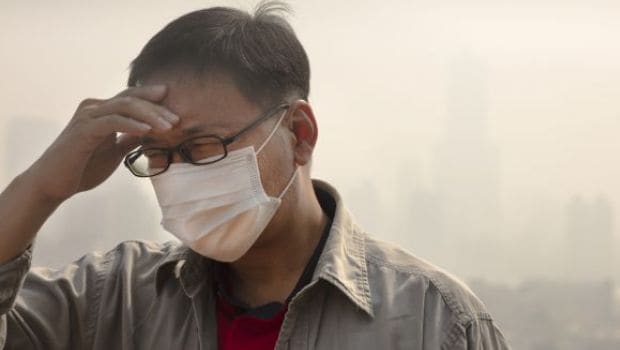Delhi Chokes on Toxic Smog After Diwali
 New Delhi was shrouded in a thick blanket of toxic smog Monday after millions of Indians lit firecrackers to mark the Diwali festival, with authorities reporting record levels of pollution in parts of the capital.
New Delhi was shrouded in a thick blanket of toxic smog Monday after millions of Indians lit firecrackers to mark the Diwali festival, with authorities reporting record levels of pollution in parts of the capital.
The reading for pollutants in the atmosphere breached the 1,000 microgram mark for the first time in one neighbourhood in south Delhi — 10 times the World Health Organization’s recommended level.
It came on the same day that another United Nations body reported how some 300 million children live with outdoor air so polluted it can cause serious physical damage, with the situation most acute in South Asia.
Gufran Beig, chief scientist at India’s state-run System of Air Quality Weather Forecasting and Research (SAFAR), said needles on monitors in the RK Puram neighbourhood had flickered briefly past the 1,000 level late on Sunday night at the finale of a frenzy of fireworks.
The levels had subsided through the night but were still running at more than 500 in several districts across the capital by Monday afternoon.
“Almost 60-70 percent of the smoke came from the firecrackers,” said Beig, who said the situation had been widely expected given that Diwali is always one of the worst periods for pollution.
In a health advisory on its website, SAFAR said there was a “serious risk” of respiratory problems for residents of Delhi and all outdoor physical activity should be avoided.
People with heart or lung disease, older adults and children should stay indoors and keep activity levels low, it added.
New Delhi’s air quality has steadily worsened over the years, a consequence of rapid urbanisation that brings pollution from diesel engines, coal-fired power plants and industrial emissions.
It also suffers from atmospheric dust, the burning of crop stubble in farms around the city and pollution from open fires lit by the urban poor to keep warm in winter or to cook food.
– Diwali effect –
India’s environment ministry late Monday ordered Delhi municipalities to monitor and take action to combat pollutants, including the burning of solid waste.
It said in a statement it had called a meeting this Friday with neighbouring states to discuss ways to minimise open burning on cropland.
Delhi authorities have responded to the pollution with a series of measures, including driving restrictions earlier this year that took around a million cars off the roads for two weeks and a ban on old trucks from entering the city.
Last week the city government also announced plans to install air purifiers and a mist-making device at major intersections to curb choking pollution.
But expert Anumita Roychowdhury said more needs to be done to tackle Delhi’s post-Diwali air, which is already saturated with the onset of winter as cooler temperatures trap pollutants.
“Diwali’s effect will stay for a while now thanks to all the firecrackers’ chemicals and heavy metals released into the already-aggravated air,” Roychowdhury, from the Delhi-based Centre for Science and Environment, told AFP.
“There’s been a decline in the use of firecrackers and there have been measures to cut (smog) down, but the change is not big enough. We need to do a lot more,” she said, suggesting a strict licensing policy on sales and a gradual phase-out of firecrackers.
A new study by the UN’s children’s fund UNICEF reported Monday that nearly one in seven children around the globe breathes outdoor air at least six times dirtier than international guidelines.
“Pollutants don’t only harm children’s developing lungs. They can actually cross the blood-brain barrier and permanently damage their developing brains and, thus, their futures,” said Anthony Lake, executive director of UNICEF.
“No society can afford to ignore air pollution.”
